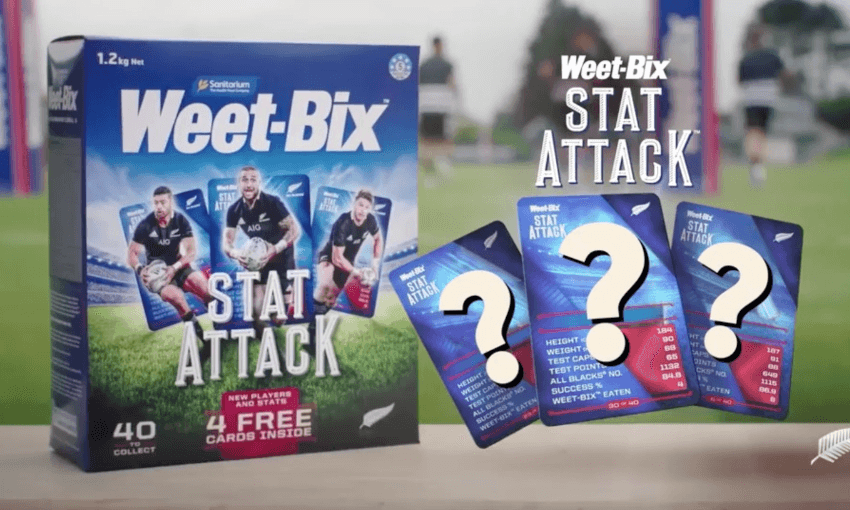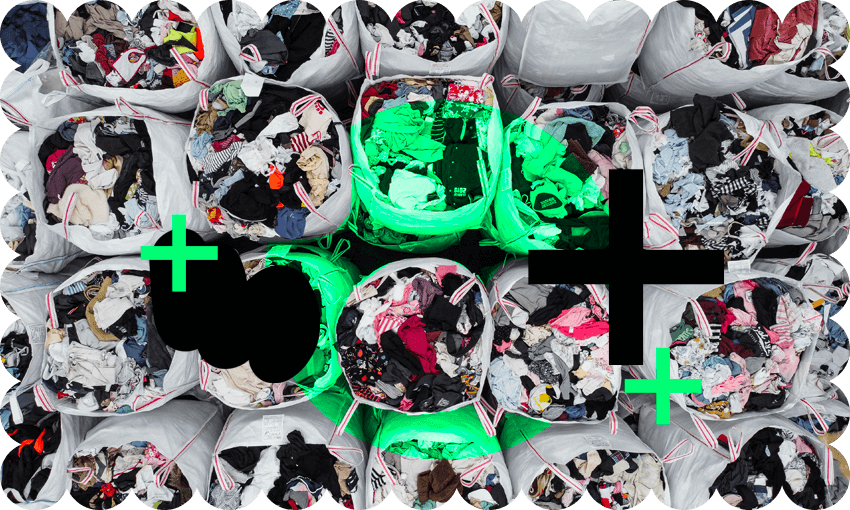We shouldn’t celebrate brands for finally doing what they could’ve done years ago, argues Madeleine Chapman.
On Monday night, Sanitarium announced through consumer affairs programme Fair Go (and later on Instagram) that the Black Ferns would feature on Stat Attack cards in 2023. The cards, which come as a collectible set in cereal boxes, feature prominent rugby players and have been a successful promotion for Sanitarium for years. The announcement was met with congratulations and thank yous. Users commented that they would be buying cereal in bulk to collect all the cards.
Virtually every Black Ferns player promoted the post (not something the All Blacks players ever do) and Fair Go dedicated a third of its “consumer heroes” episode to the development (young Daisy had asked last month why there were no Black Ferns on the cards and Fair Go looked into it).
The episode ended with the big reveal that Black Ferns Stat Attack cards were on the way, and Daisy was gifted a range of Sanitarium merch which was displayed prominently during the segment.
It would all be wholesome and beautiful except Sanitarium has, according to them, enjoyed a “20+ year sponsorship with the All Blacks” and has been making Stat Attack cards for at least five. A few Black Ferns were included in a 2018 Stat Attack set and then were never included again. The most recent promotion began a month before the World Cup, here in New Zealand, and still featured no Black Ferns. Technically Sanitarium stans could argue that the company sponsors the All Blacks, not the Black Ferns. That’s correct. It doesn’t officially sponsor the Black Ferns. Instead, it has “product sponsorship”, meaning it provides cereal and Up&Gos to the team. But it has enough association with NZ Rugby and the players that no one would know the difference so why bother investing actual money?
Applauding Sanitarium for including the Black Ferns after the World Cup is over and the players are household names is like applauding a restaurant for finally supplying cutlery. It’s a great thing to have but after a few seconds you start to wonder why the hell it wasn’t there from the beginning.
An aside – here is a list of things to keep in mind:
1) I have been referring to Sanitarium as a company but it is technically a charity as it is owned by the Seventh Day Adventist church and is therefore exempt from company income tax.
2) The Seventh Day Adventist church’s official stance is against homosexuality. According to the website: “Seventh-day Adventists believe that sexual intimacy belongs only within the marital relationship of a man and a woman.”
3) A number of Black Ferns are openly queer and publicly celebrate their queerness.
In mid-September, I asked Sanitarium why there were no Black Ferns on its Weet-Bix Stat Attack cards. I asked the longtime NZ Rugby partner whether or not there had even been a discussion or consideration around featuring some of the women on cereal boxes during the World Cup.
Sanitarium’s response at the time was long and typically corporate, citing a “proud legacy” between itself and the All Blacks, noting that the company had “included the Black Ferns in Weet-Bix promotions in the past and are looking to again in the future.”
It was a disappointing response from one of New Zealand’s most recognisable brands, particularly given the association of Weet-Bix with active kids (girls included) all over the country through its Try-athlon events. The interaction (and duplicate response from NZ Rugby about the lack of sponsor engagement) led me to write a piece in mid-October headlined “Does NZ Rugby even know there’s a World Cup happening?” I included the example of Sanitarium and the apparent ambivalence towards the Black Ferns during a World Cup campaign.
Two months later and the Black Ferns are world champions, playing the grand final to a sold-out Eden Park and the highest-rating free to air broadcast of the year. This is when all the brands will jump onboard, better late than never, I thought. And how partners like Sanitarium will rue the day they neglected to even pay attention to such a sellable product as the Black Ferns players.
But in the world of supporting women’s sport, the bar is apparently on the floor.
Daisy, who was incredible talent as the young consumer reporter on Fair Go, asked the programme on October 3 why she couldn’t collect Black Ferns Stat-Attack cards. Fair Go asked Sanitarium days later and received what appears to be a near-verbatim response to the one I’d received in September. A proud legacy…All Blacks…Try-athlon. On November 21, Sanitarium informed Fair Go that there would be a new set out in 2023 (so, quite a while after the World Cup and more than 20 years after Sanitarium began its relationship with NZ Rugby) featuring Black Ferns players. It was filmed, aired, promoted and celebrated. Sanitarium is an advertiser on TVNZ, but Fair Go confirmed that the news and current affairs shows operate independently.
Sanitarium did not respond to a follow-up request for comment on the timing of its promotion or its impetus. There has been no announcement about any official sponsorship of the Black Ferns by Sanitarium.
The cards outcome is ultimately good. Black Ferns should be on Weet-Bix Stat-Attack cards. And it makes sense to celebrate it and be glad. But the sheer force of the positive response shows both how little has been given to women’s sport and how little is required for companies to become champions of it, even after decades of neglect.




